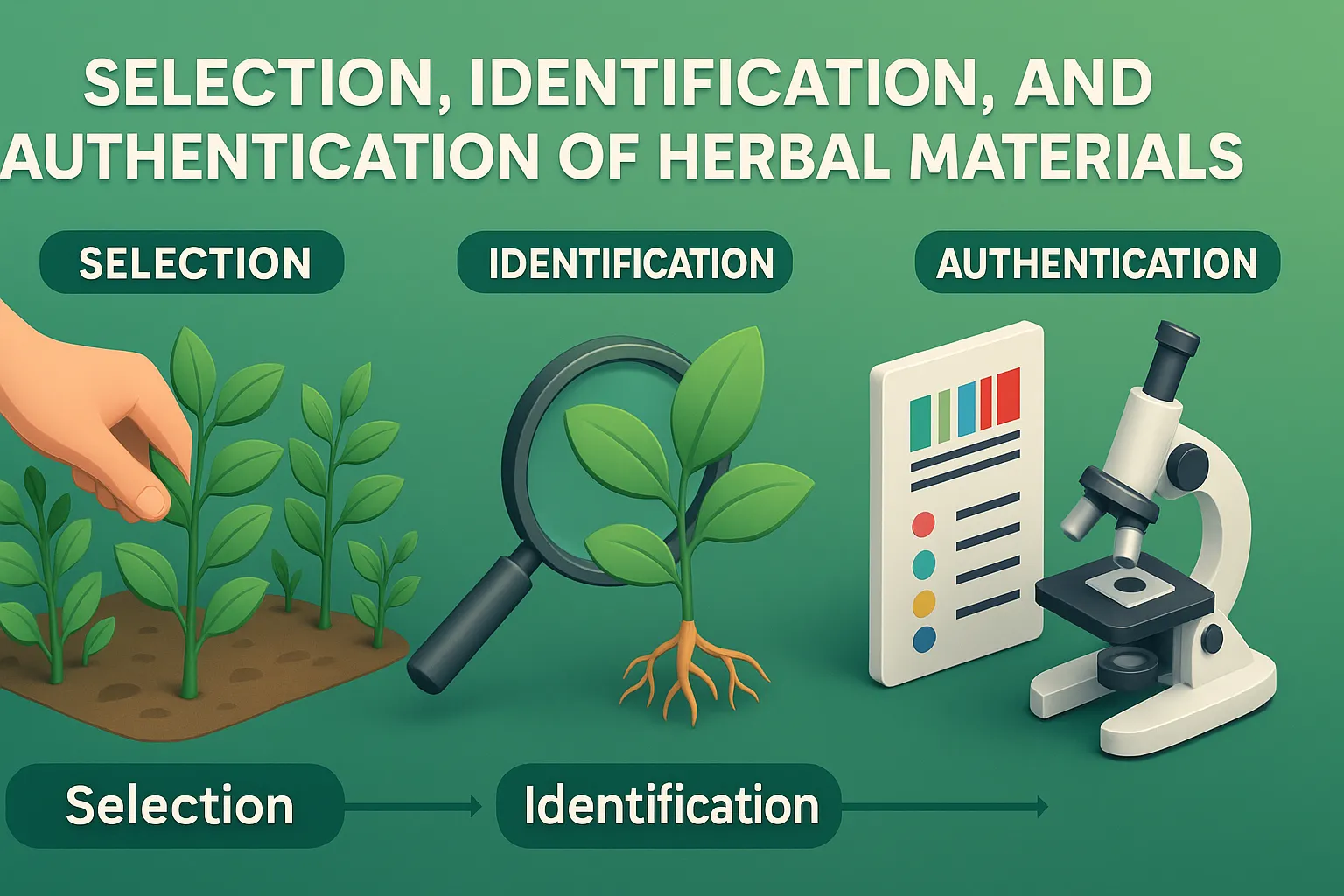Selection Identification and Authentication of Herbal Materials ensure quality, purity, and safety of medicinal plants in herbal medicine.
- Ensuring the safety, efficacy, and quality of herbal materials involves three key steps: selection, identification, and authentication.
1. Selection of Herbal Materials
-
- The selection process ensures the right plant material is used for herbal medicine or products.
-
Key Considerations:
- Quality – Choose fresh, uncontaminated plants free from adulteration.
- Correct Plant Part – Use the appropriate part (leaves, root, stem) for the desired active compounds.
- Harvesting Time – Collect plants at the right time for optimal potency.
-
Selection Techniques:
- Research & Consultation – Study botanical literature or consult experts.
- Observation & Quality Control – Examine plant appearance and physical traits.
- Taste & Smell – Assess sensory properties.
- Safety Considerations – Ensure plants are free from toxic substances.
2. Identification of Herbal Materials
-
- Correct identification prevents misidentification and ensures authenticity.
-
Methods of Identification:
- Morphological Identification – Examines physical traits like leaves, stem, flowers, and fruit using a botanical guide.
- Microscopic Identification – Studies cellular structures under a microscope, often with staining techniques.
- Physical & Chemical Identification – Assesses sensory traits (odor, taste) and uses chemical tests like:
- Thin-layer Chromatography (TLC) – Determines chemical composition.
- High-Performance Liquid Chromatography (HPLC) – Detects active compounds.
- Mass Spectrometry (MS) – Identifies molecular structure.
- Genetic Identification – Analyzes DNA using techniques like PCR, DNA sequencing, and fingerprinting.
3. Authentication of Herbal Materials
-
- Authentication verifies the identity and purity of herbal materials.
-
Methods of Authentication:
- Morphological Authentication – Examines size, shape, color, texture, and odor.
- Chemical Authentication – Uses chromatography, spectrophotometry, and mass spectrometry.
- DNA Authentication – Confirms plant species through genetic analysis.
- Microscopic Authentication – Identifies plant features under a microscope.
- Organoleptic Authentication – Assesses sensory traits like taste and aroma.
- Spectroscopic Authentication – Uses techniques like infrared spectroscopy and nuclear magnetic resonance (NMR).
Proper selection, identification, and authentication of herbal materials are essential for producing high-quality, safe, and effective herbal products.

